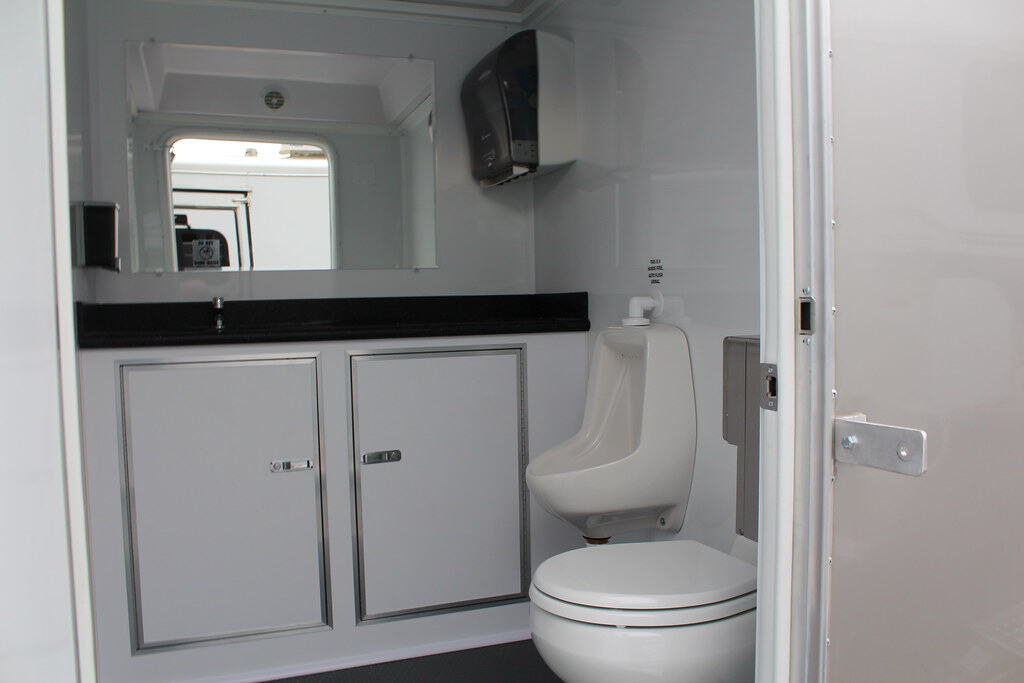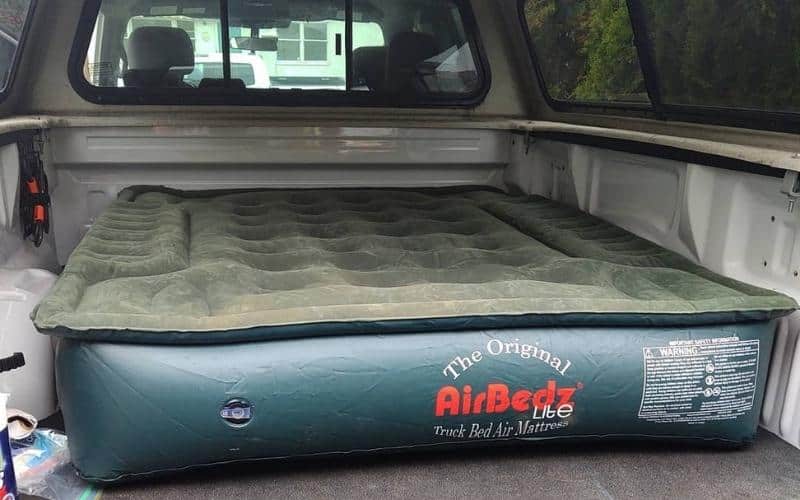If you live in an RV in a hot or humid climate, the lack of insulation can become a problem.
The result sometimes feels like living in a hot box with a complete lack of airflow. But Why mess with window A/C units when a portable RV air conditioner can easily solve those issues.
Instead of trying to finagle a massive roof-mounted unit into place, opt for a portable air conditioner — at least for the time being.
While many RVs already have a roof-mounted air conditioner, there are several benefits to having a portable unit.
A portable air conditioner can replace or supplement a roof-mounted unit with no expensive installation required.
These small RV A/C units are designed to cool your RV are also much easier to move (they’re on wheels after all), which allows you to use them in more places than just your RV and it also means you won’t have to climb onto the roof when your A/C needs service.
The best portable RV air conditioners will keep your space more comfortable by accurately putting cold air right where you need it in your camper.
Some portable air conditioners also have the ability to function as a dehumidifier, which is a great option for RVers living in humid locations.
Deciding on a portable air conditioning unit for your RV requires an understanding of how these units work and what’s needed for your specific RV.
To help you make the wisest investment possible, we’ve done the research to compile a list of the six best RV portable air conditioners – followed by a buying guide that will help you pick the right one for your motorhome or camper trailer.
These are the best small and portable air RV conditioners you can buy:
The 6 Best Portable Air Conditioners For RVs In 2024
These are my choices for the six best small and portable air conditioners for RVs. To help you further narrow down your search, I’ve categorized each by their best use or feature.
1. Best Overall: Black + Decker BPACT10WT portable RV Air Conditioner
If you’re looking for a portable RV air conditioning unit that walks the perfect line between performance and affordability, the best portable A/C for rv is the Black + Decker BPACT10WT Portable Air Conditioner.
It’s a compact, 10,000 BTU unit that is meant to cool spaces up to 250 square feet in size.
This means that it’s best used in RVs with lengths of 31 feet or less. For these spaces, however, it provides exceptional cooling power at an affordable price.
This portable RV air conditioner also includes an adjustable fan speed and a Sleep Mode that allows you to keep air circulating in your RV without having to listen to loud humming while you’re trying to fall asleep.
I personally appreciate that this unit offers three separate modes. These modes include a cool setting, fan setting, and dehumidifier setting.
This gives you the ability to simply use it to promote air flow if air conditioning or dehumidifying isn’t needed on a given day. This can also reduce electricity consumption.
That said, this unit is powerful enough to cool your RV space down or remove moisture from the air.
Unlike some dehumidifiers, you won’t have to worry about emptying a water bucket on this unit.
It comes with a hose adapter that installs on the back of the unit to dump water that it collects out the window instead of accumulating it in the unit itself.
Things We Like
Things We Don’t Like
2. Best Budget-Friendly: JHS 8,000 BTU 3-in-1 Floor portable AC Unit
The JHS 8,000 BTU portable air conditioning unit is a budget-friendly option for RVers that still want a high-performance portable air conditioner.
With 8,000 BTUs, this unit is rated to provide air circulation, cooling, and dehumidifying for spaces up to 170 square feet.
This is a great small and compact A/C unit for RVs or trailers under 22 feet in length. One of its best features is the remote control for wireless operation.
If you keep the remote next to your bed, for example, you’ll be able to reset the air conditioner for night-time use without getting back up once you’ve settled in for sleep.
The LED display on the front of the unit provides visual confirmation of a number of important settings.
This portable rv a/c includes temperature and humidity settings, as well as mode, timer, and speed. The display will also remind you when the unit’s onboard water tank is full.
That last point shouldn’t be overlooked. Unlike the first unit on our list, this air conditioner has an onboard water tank for storing the moisture it pulls from the air when in dehumidifying mode.
This means you’ll have to keep track of regularly emptying that tank, but it does give you more freedom to move it around your RV, as you won’t have to rely on a window installation.
Things We Like
Things We Don’t Like
3. Best Multi-Purpose: Whynter ARC-14S 14,000 BTU Dual Hose Portable AC
Those searching for a portable air conditioner that can function to cool their RV, remove excess moisture from their space, or simply provide extra air circulation should look closer at the Whynter ARC-14S portable A/C unit.
This is also great for RVers with rigs over 40 feet in length, as it’s rated to cool and dehumidify spaces up to 500 square feet in size.
In terms of dehumidifying capacity, the ARC-14S can remove up to 101 pints of water from the air in your RV per day.
Before powering up this air conditioner, you’ll need to properly install it in one of your RV windows.
It comes with an installation kit that allows you to install the unit on windows with lengths from 20 to 47 inches.
The kit comes with an exhaust and intake hose that can extend up to 60 inches in length.
Two of my favorite aspects of are its eco-friendly features. It uses an activated carbon filter to clean the air that passes through and it also utilizes chlorofluorocarbon-free refrigerant to provide cooling.
Things We Like
Things We Don’t Like
4. With Oscillating Discharge: LG LP1417GSR Remote Control Portable AC for RV
If you’re looking for a portable air conditioner to both cool and improve airflow in your RV, you’ll like the oscillating discharge feature of the LG LP1417GSR A/C unit.
This feature sweeps and circulates air more evenly through your RV so that you don’t have hot spots where warm air accumulates.
This is a great choice for RV owners with rigs over 40 feet in length because it’s rated to service spaces up to 500 square feet in size.
This is true whether you have it set to Cool, Fan, or Dehumidifying mode. And if you’re using the latter, you won’t have to worry about emptying a water tank every other day.
Through its system of auto-evaporation, all moisture that this unit pulls from the air inside your RV is evaporated within the unit itself.
This means you won’t have to regularly shut it down to empty an onboard water tank.
It does, however, need to be installed in one of your RV windows and can fit windows with lengths from 18 to 50 inches.
I also like the touch controls on this unit because so many of us are already used to touch screens in our daily lives.
This makes the operation of the unit simpler and easily allows you to toggle between modes and settings when you need to change how the air conditioner is working for you.
Things We Like
Things We Don’t Like
5. Best Energy Star Certified: Frigidaire FGRC1044T1 10000 BTU Cool Connect Smart Window AC
If energy efficiency is your top priority, stop and look more closely at the Frigidaire FGR1044T1 air conditioner.
It is an Energy Star certified unit and received a 12.0 energy efficiency ratio (EER) according to Energy Star’s 2017 ratings.
The Energy Star label is synonymous with energy efficiency amongst air conditioners and, generally speaking, a higher EER means greater efficiency.
This is also a great choice for RV owners that suffer from year-round or seasonal allergies.
The unit has a built-in clean air ionizer that works to remove pollen, allergens, and other impurities from the air in your RV.
So you’ll be more comfortable because you won’t be so hot and, hopefully, you will also be sneezing less during allergy season.
I also love the ability to sync this air conditioner to your smartphone. Much like the earlier unit that came with remote control, you’ll be able to change the mode or settings on this air conditioner from anywhere inside your RV.
With Wi-Fi compatibility, you’ll also be able to crank up the A/C from your phone if you’re away and want to cool things down before you return.
Finally, this is a great air conditioning unit for RVs longer than 40 feet in length. It is a 10,000 BTU unit that’s rated to service spaces up to 450 square feet in size.
You will need to install it in one of your RV windows and it will fit window lengths from 24 to 40 inches.
Things We Like
Things We Don’t Like
6. Best With High BTU Rating: homelabs 14,000 btu Dehumidifier Function AC For RV
For those that want a portable RV air conditioner with one of the highest BTU ratings on the market, the hOmeLabs 14,000 BTU unit is an excellent choice.
With a powerful unit like this one, you’ll be able to circulate air, cool, or dehumidify spaces from 450 to 600 square feet in size.
While it’s one of the heavier air conditioners on our list, it comes with wheels so you can easily move it around your RV. It is best suited for double-hung windows and it’s compatible for windows up to 48 inches wide.
It does include a drain hose for the dehumidifying feature and that must be installed to allow water to drain out of your RV or into the RV’s drainage system.
Unlike some of the models that have built-in air filters, this unit’s filter is removable and washable.
This means you won’t have to buy a new filter when the old one has reached its limit.
The manufacturer recommends to wash the filter every two weeks to ensure cleaner airflow and extend the lifespan of the filter itself.
I really appreciate that this unit includes an Eco-Friendly Sleep feature. This reduces the noise output so that you can get to sleep and also decreases the unit’s energy consumption through the night.
You’ll also be able to change the settings on this unit right from your bed with the included remote control.
Things We Like
Things We Don’t Like
How to find the best portable AC unit for Your RV
Every RV (and RV owner) has unique considerations that differ from others. So I’ve put together this buying guide to help you prioritize what’s most important to you when selecting a portable air conditioner for RV use.
Types Of RV Portable Air Conditioner
There are several different types of portable air conditioners that you can choose from. Let’s start by addressing some of the major advantages and disadvantages of each type.
Vent-Free Air Conditioner
Vent-free air conditioners are truly the most portable option out there. They simply require an AC power source and they pull warm air from your RV and expel cooler air back out.
In essence, they function similarly to a swamp cooler and tend to utilize minimal energy.However, these units are really only effective in areas with relatively dry heat.
In more humid climates, they don’t function as well and can often result in a puddle of water forming under the unit if you don’t attach an external hose for drainage.
Some of them do come with a water tank to collected moisture, but this also means you’ll have to empty that tank regularly.
Vented Air Conditioner
This type of RV air conditioner uses a hose (or hoses) to ventilate the air from inside to outside.
Many of them work best with windows that slide open upwards so that a frame can be placed under the window to secure the hose. One advantage of these air conditioners is that they can be quite affordable.
There are several drawbacks, however. These units require proper ventilation during the installation process.
That’s why it’s good to choose a model that includes at least two ventilation hoses because improper ventilation will allow hot air back into your RV.
Because their compressors will be running inside your RV, these units can produce more noise than many RV owners prefer.
Window Air Conditioner
This type of air conditioner is installed right in one of your RV’s windows. They tend to offer great cooling ability in a relatively compact package and they also take up much less space than a unit that sits on the floor. These units are often quiet and easier to maintain than their counterparts.
The downside of this type of air conditioner is that it can require a bit of customization to install properly.
This makes them a better solution for RVers living in one place for extended durations so that you don’t have to constantly remove and re-install your air conditioner.
Assessing Your Square Footage Needs
Most RVs are a standard eight or nine feet wide. Lengths, of course, vary all over the map.
And heights even very different, although all rigs have to be able to fit under the shortest over and underpasses out there.
All that said, you should take some measurements of your RV living space before selecting a portable air conditioner. My RV, for example, is 36 feet long by 8 feet wide.
That comes out to a total of 288 square feet. But because it’s an older model with minimal insulation, I’d probably opt for an air conditioner that’s rated for a minimum of 350 square feet.
The type of RV you’re driving also comes into play. Class A motorhomes, for example, can actually have much less headroom than a 5th wheel that has higher ceilings.
If you want to effectively cool all that additional head space in a 5th wheel, you’re going to need a more powerful air conditioner than your simple square footage measurement might suggest.
Method of Installation
Because they are ‘portable’ units, most of these air conditioners do not require permanent installation.
That being said, some of them worked best if temporarily installed in one of your RV’s windows. Others are made to set on the ground in your RV and plug into a wall outlet.
If you frequently move to new locations in your RV, look for an air conditioner that doesn’t require window installation.
This means it doesn’t have a hose coming out of the back that must be set outside for water drainage.
Those of you that live in one spot in your RV for extended durations should consider an air conditioner you can install in the window.
This will help you save floor space while allowing for better overall cooling and air circulation.
Before you finalize your purchase, it’s really important that you feel comfortable with the method of installation for the unit you choose.
Otherwise, you’ll need to spend additional resources to pay a professional to help you install your air conditioner.
Multi-Purpose Functionality
Fortunately, most of the best portable air conditioners for RV use offer multiple modes and settings.
If they don’t, you should probably move on to another model that can serve multiple purposes.
A quality RV portable air conditioner should have at least three modes: Fan, Cool, and Dehumidifier.
This allows you to change the mode according to the most pertinent needs in your immediate environment, which is really important for RVers that tend to move around to new locations frequently.
Frequently Asked Questions
Before you select the right portable air conditioner for your RV, let’s address some of the most frequently asked questions about these units.
These questions will include information on maintenance, installation, and technical specifications.
What is ‘BTU rating’?
To put it simply, ‘BTU’ stands for ‘British Thermal Units’. To get a little scientific, it’s a measurement that represents the amount of heat required to raise the temperature of one pound of water by one degree Fahrenheit.
What are some best practices for maintaining a portable air conditioner?
Regular maintenance is important to extend the life of your portable air conditioner. For starters, make sure to clean the outside of the unit regularly.
Once a week isn’t overkill, but you should also be checking and cleaning the filter at least every two weeks, so you might as well work exterior cleaning into your routine then as well.
Additional maintenance best practices include inspecting the condenser coils, making sure your exhaust hose is straight, cleaning around the air conditioner, and scheduling regular check-ups with an HVAC specialist.
How do I install a portable air conditioner in my RV?
The exact answer to this question will depend on the specific model that you choose.
Some models can be set on the floor in a convenient location and plugged right into the closest wall outlet.
Other units must be installed in your RV window so that the hose coming out of the back can drain outside.
Conclusion
A portable air conditioner is a great choice for RVers that live in their rigs for extended durations.
If that’s you, you probably already know how uncomfortable your RV can get when temperatures start to rise.
These units are also great holdovers if you’re waiting to replace the onboard air conditioning unit in your RV until next season.
The best portable air conditioners for RV use are rated to similar specifications and cooling power as standard, built-in RV air conditioners.
But because they are portable, they’re often much easier to service and they provide multi-purpose functionality.
We hope you’ve enjoyed these air conditioner reviews and we wish you the best of luck selecting the right unit for your RV!

![The 6 Best Portable Air Conditioners For RVs In [currentyear] 1 Best Portable Air Conditioners For RV](https://www.rvingknowhow.com/wp-content/uploads/2020/06/Best-Portable-Air-Conditioners-For-RV.jpg)
![The 6 Best Portable Air Conditioners For RVs In [currentyear] 2 BLACK+DECKER 10,000 BTU Portable Air Conditioner up to 450 Sq. ft. with Remote Control, White](https://www.rvingknowhow.com/wp-content/uploads/2024/02/31Staifu7RL._SL500_.webp)
![The 6 Best Portable Air Conditioners For RVs In [currentyear] 3 JHS 8,000 BTU Small Portable Air Conditioner 3-in-1 Floor AC Unit with 2 Fan Speeds, Remote Control and Digital LED Display, Cover up to 200 Sq. Ft, White](https://www.rvingknowhow.com/wp-content/uploads/2024/02/31TokKUQLGL._SL500_.webp)
![The 6 Best Portable Air Conditioners For RVs In [currentyear] 4 Whynter ARC-14S 14,000 BTU Dual Hose Portable Air Conditioner with Dehumidifier and Fan for Rooms Up to 500 Square Feet, Includes Storage Bag, Platinum/Black, AC Unit Only](https://www.rvingknowhow.com/wp-content/uploads/2024/02/31hIO5mnJQL._SL500_.webp)
![The 6 Best Portable Air Conditioners For RVs In [currentyear] 5 LG LP1017WSR 10,200 BTU White Portable Air Conditioner - Rooms up to 300 Sq. Ft](https://www.rvingknowhow.com/wp-content/uploads/2024/03/31IZtNqScoL._SL500_.webp)
![The 6 Best Portable Air Conditioners For RVs In [currentyear] 6 Frigidaire 12000 Btu Cool Connect Smart Window Air Conditioner w/Wifi Control](https://www.rvingknowhow.com/wp-content/uploads/2024/02/61nvffQwvL._SL500_.webp)
![The 6 Best Portable Air Conditioners For RVs In [currentyear] 7 hOmelabs Portable Air Conditioner 12000 BTU - Cools Rooms up to 450 Sq. Ft. - Quiet AC Unit with Wheels, Washable Filter and Remote Control (New DOE 7200 BTU)](https://www.rvingknowhow.com/wp-content/uploads/2024/02/31OONK4HneL._SL500_.webp)



![4 Best Keyless RV Door Locks for Better RV Security in [currentyear] 11 Best RV Keyless Entry Door Locks](https://www.rvingknowhow.com/wp-content/uploads/2020/04/Best-RV-Keyless-Entry-Door-Locks.jpg)
